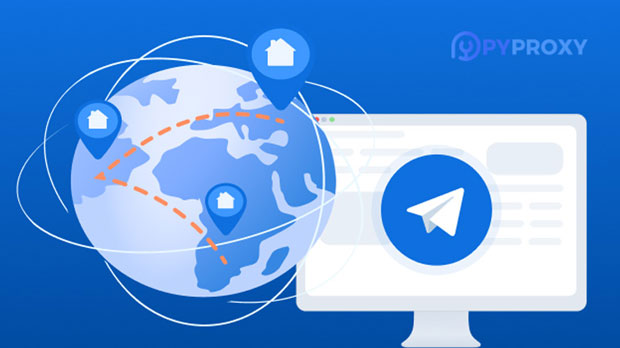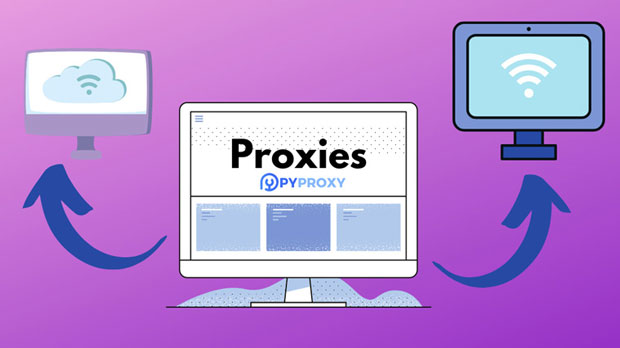Web scraping is an essential technique for many businesses, researchers, and developers looking to gather data from websites. In this context, proxy services like IPRoyal and PYPROXY are crucial for bypassing geo-blocking, CAPTCHA systems, and rate limiting. When comparing these two services, the central question often revolves around which one offers a higher success rate for web scraping tasks. This article dives deep into both IPRoyal and PyProxy proxies, analyzing their reliability, speed, and overall effectiveness, providing businesses with the critical insights needed to choose the right proxy service for their scraping needs. Overview of Web Scraping and Proxy ServicesWeb scraping refers to the automated process of extracting large volumes of data from websites. This process often requires the use of proxy services to ensure anonymity, prevent IP blocking, and increase the success rate of the data retrieval process. Proxies are essentially intermediaries between the user’s device and the target website, masking the original IP address and allowing the scraper to appear as though it is coming from a different location.Two common types of proxies used for web scraping are residential proxies and data center proxies. IPRoyal and PyProxy are two proxy services that offer both types of proxies, with different strengths and weaknesses. Choosing the right proxy service is crucial for optimizing web scraping success rates.IPRoyal OverviewIPRoyal offers a wide range of proxy solutions aimed at providing fast and secure web scraping capabilities. The service is particularly known for its flexibility and ability to scale with the needs of the user. IPRoyal’s residential proxies, in particular, are designed to mimic real user behavior, making it difficult for websites to detect scraping attempts. One of the standout features of IPRoyal is its ability to rotate IP addresses frequently, which helps avoid IP blocking and ensures that scraping tasks run smoothly. However, the overall performance may vary depending on factors like network congestion and geographic location.PyProxy OverviewPyProxy is another popular proxy service that focuses on providing high-quality residential proxies for web scraping. The company boasts a large pool of residential IP addresses sourced from real users, offering high anonymity levels and a low risk of detection. PyProxy is often praised for its reliability and consistent performance, with minimal downtime or latency during scraping tasks.PyProxy also offers additional tools like IP rotation and the ability to select specific IP locations, which can further enhance the success rate of scraping tasks. However, the service can sometimes be more expensive than IPRoyal, depending on the plan selected.Success Rate ComparisonThe success rate of web scraping depends on several factors, including the proxy's ability to avoid detection, handle high traffic volumes, and provide stable connections. In terms of success rate, both IPRoyal and PyProxy have their strengths:- PyProxy: Generally, PyProxy is known for its high success rate, especially with residential proxies. The vast pool of real residential IPs helps avoid detection by websites, which often use IP-based blocking techniques to prevent scraping. PyProxy’s IP rotation and geographic targeting capabilities contribute to its overall reliability, especially when scraping geo-restricted data or dealing with websites that use sophisticated anti-scraping measures.- IPRoyal: While IPRoyal offers competitive performance, its success rate may not always match PyProxy's. This is largely due to the potential for network congestion and occasional latency issues. However, when it comes to flexibility and price, IPRoyal has a more affordable solution that may suit businesses or developers looking for budget-friendly options with decent success rates. Additionally, IPRoyal’s ability to handle large-scale scraping tasks makes it a viable option for users focused on volume over perfection.Factors Affecting Success RateThe success rate of both IPRoyal and PyProxy proxies can be influenced by several external factors, such as:- Website Security Measures: Websites with sophisticated anti-scraping mechanisms, such as CAPTCHA systems, rate limiting, or IP blocking, can pose challenges to both IPRoyal and PyProxy users. While both services offer robust countermeasures, websites with high-level security might still block scraping attempts occasionally. - Proxy Type (Residential vs. Data Center): Residential proxies, like those offered by PyProxy, tend to have a higher success rate due to their ability to mimic real user behavior more effectively. Data center proxies, which are cheaper but less anonymous, are generally more prone to being detected and blocked, impacting the overall success rate of scraping tasks.- IP Rotation and Management: The frequency and effectiveness of IP rotation play a crucial role in the success of web scraping. Both IPRoyal and PyProxy provide IP rotation capabilities, but PyProxy’s rotation is often considered smoother and more reliable, contributing to a higher success rate.Performance and SpeedSpeed is another critical factor in determining the success rate of web scraping. A slow proxy connection can result in incomplete data retrieval, missed information, or extended scraping times.- IPRoyal: IPRoyal’s connection speeds are generally fast, but they may fluctuate depending on network congestion and the type of proxies being used. Users who require quick data extraction might experience occasional slowdowns, especially if using less reliable proxy pools. - PyProxy: In comparison, PyProxy is often considered more stable in terms of connection speeds. Their proxies offer consistently high performance, making them more reliable for users with tight deadlines or who need to scrape large amounts of data quickly.Cost Efficiency and Value for MoneyWhen comparing the cost efficiency of both services, IPRoyal tends to be more affordable than PyProxy. However, this lower price often comes at the cost of slightly reduced performance and success rates.- IPRoyal: For users with a limited budget, IPRoyal’s pricing structure offers flexibility and can provide a decent success rate for basic web scraping tasks. However, users may need to invest in additional features or higher-tier plans to ensure a higher success rate, especially for large-scale scraping tasks.- PyProxy: PyProxy, while more expensive, offers a higher success rate and greater reliability, making it a better choice for businesses that require consistent and high-quality scraping results. The additional cost may be justified by the service’s premium features and superior performance.Conclusion: Which Proxy Service Has a Higher Success Rate?In conclusion, both IPRoyal and PyProxy offer competitive proxy services for web scraping, but the overall success rate depends largely on the specific needs and goals of the user.- PyProxy emerges as the more reliable option for users seeking higher success rates, especially when dealing with complex websites, residential IPs, and geo-targeted scraping tasks. Its consistency, superior proxy management, and faster speeds make it an ideal choice for businesses looking for premium performance.- IPRoyal, while more affordable, may not always provide the same high level of success, particularly with large-scale or high-volume scraping projects. However, it remains a solid option for users who are on a budget and do not require the same level of consistency as PyProxy.Ultimately, the decision between IPRoyal and PyProxy should be based on the scale of the web scraping project, the budget, and the specific requirements for speed and success rates.
Sep 12, 2025



































































